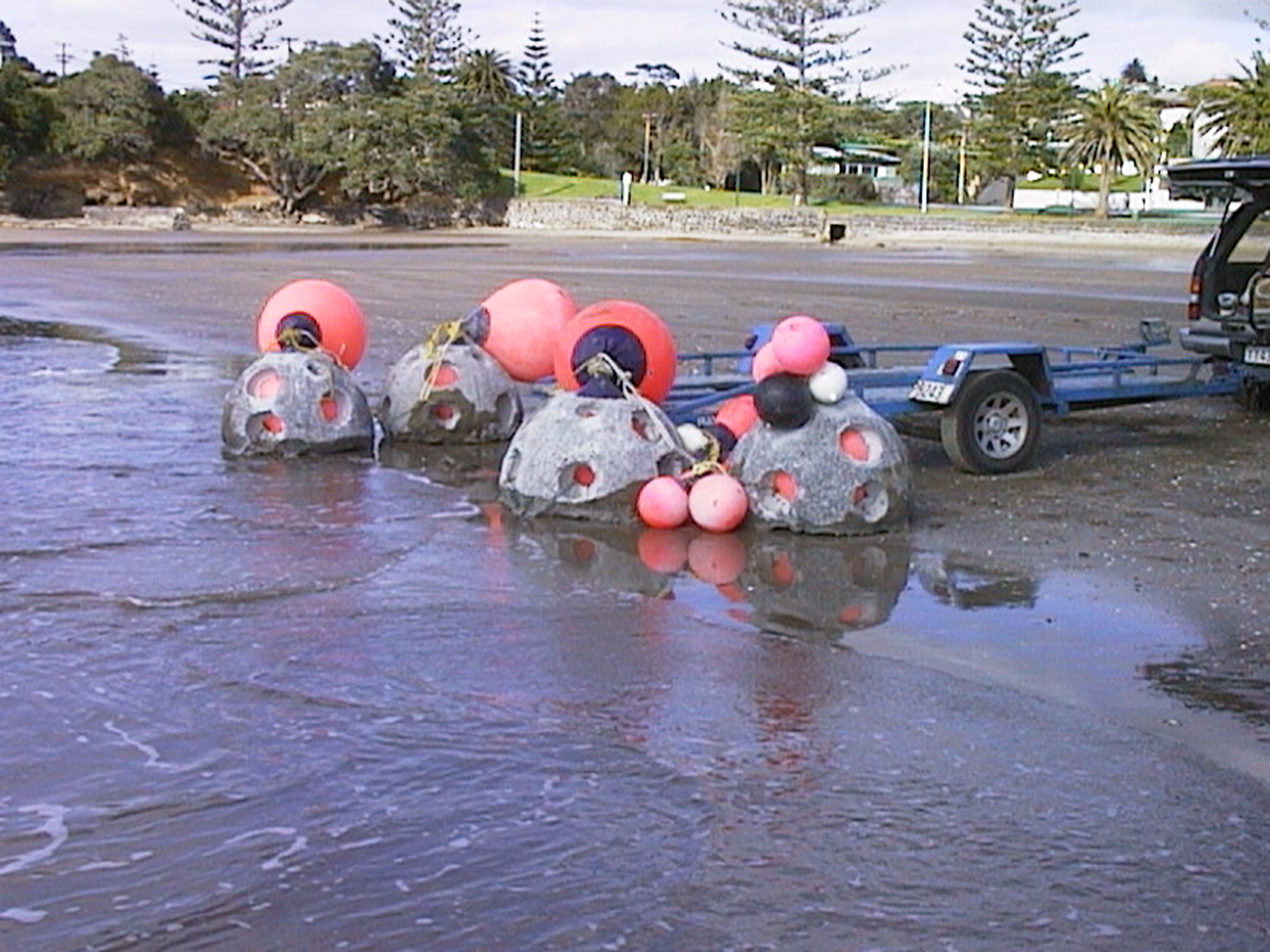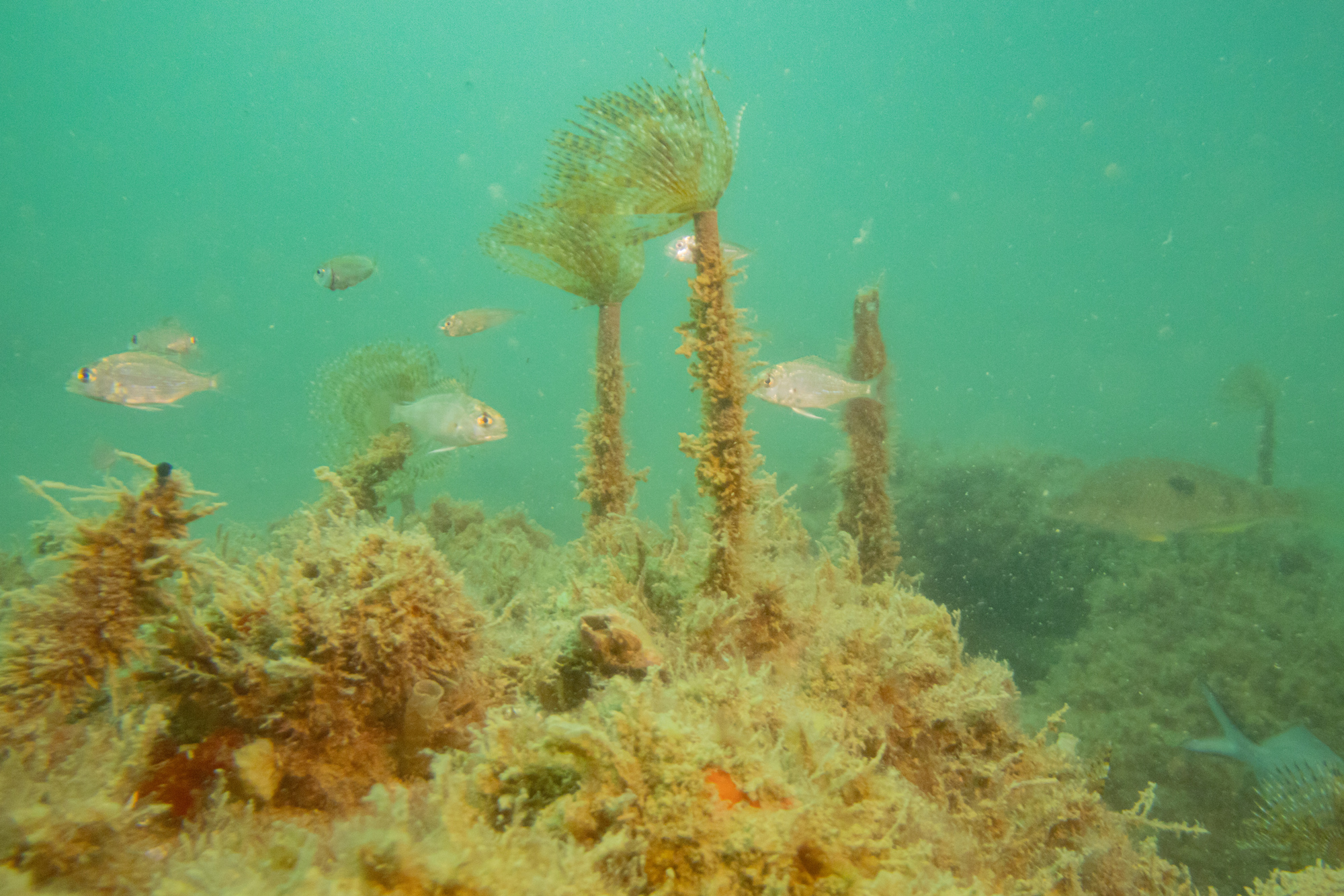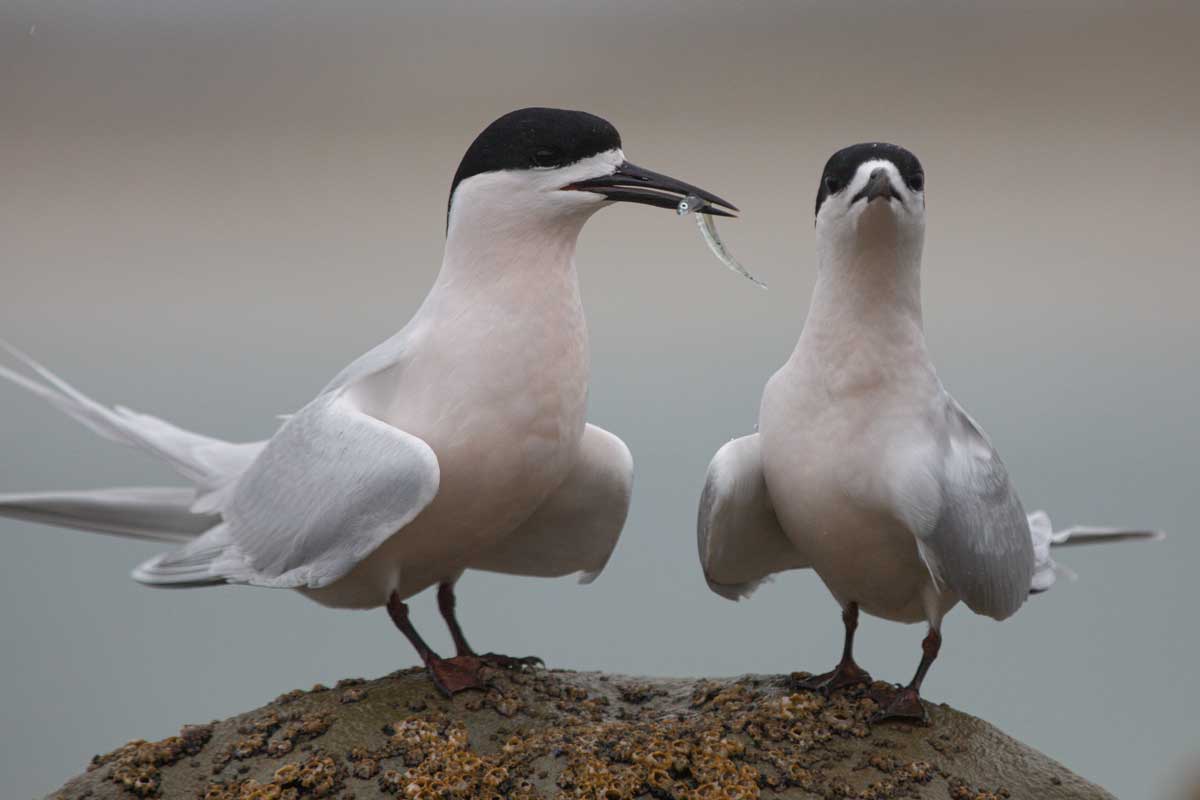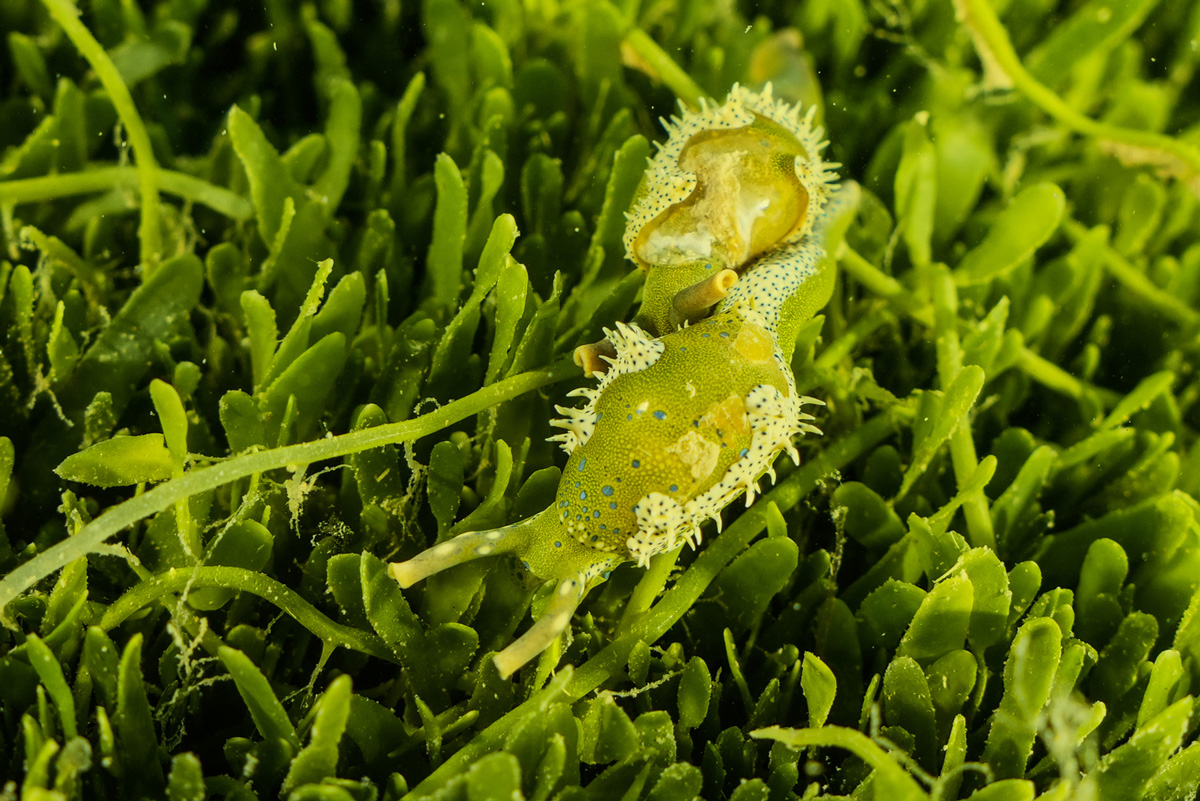Every fisher knows reefs are the best place to find fish. Reefs can be biological like mussel reefs or hard like a rocky reefs. More reefs equals more fish. I’m a diver who has been working to restore the lost mussel reefs in the Hauraki Gulf. I have wanted to dive the reef balls in Long Bay since I heard about them more than 10 years ago.
24 reef balls were deployed in two reefs at Long Bay-Okura Marine Reserve in 2001. They were quickly colonised and increased the biodiversity in the area. I made three attempts to find them using different methods, then gave up. I thought they must have sunk into the substrate. The last report on them in 2004 noted “pockets of fine silt to 15 cm deep near reef”.

Then a few months ago I got a call from an unusually excited friend “I found them!” Jordi Tablada was looking at some old NIWA sonar maps that clearly showed 24 dots in two clumps in Long Bay. He checked their locations and realised my error. The co-ordinates I had been using were published in 2002 but they used an out of date data set. I had missed them by just a few hundred meters. I was desperate to go searching again but I had to wait.
Long Bay is heavily impacted by sediment run off. Fine sediments stay in the water column for a long time and are worse near the seafloor. In Long Bay the fine sediment is mixed in with the sand and even when it hasn’t rained for weeks a bit of wind / swell will kick it up. To photograph the reef I needed to visit when the conditions were perfect. One of the outcomes sought from the Long Bay reef ball project was to “monitor the problems of run off which are faced by the reserve”. I don’t know why the monitoring stopped but I imagine difficulty with visibility in the reserve would not have helped. In late January Ed Chignell sent me a message saying we have a small window to have another shot – I was all in.

The first indication that we had found the reef balls was a flurry of activity in the fish finder. I jumped into the water with big expectations and was not disappointed. I could see one, two, three, many reef balls! I cheered to myself underwater then resurfaced to share my enthusiasm in a more practical way.

I spent over an hour underwater exploring both reefs and have documented the find on iNaturalist.nz and Youtube.
I was blown away with the numbers of fish, particularly silver sweep, juvenile jack mackerel and tāmure / snapper. I saw more fish in five minutes at these reefs than I did searching hundreds of meters of sandy seafloor in Long Bay looking for the reef balls. I have also spent hours on the rocky reefs in this bay (which have abundant fish life) and thought the biodiversity created by the reef ball habitat was unique.

A formal scientific survey could be done to see what has changed over the last 20 years. I think it would show that artificial reef creation is a viable way to increase biodiversity in the moana. I imagine it would also note that care must be given to placement of reefs as hard surfaces may also increase numbers of already established introduced species. There are lots of introduced species on the rocky reefs of this marine reserve and the rest of the inner Gulf. There is no way to eradicate them and I’m trying to make friends with them while being careful not to spread them further.

Reefball.org states that “New Zealand is one of the hardest countries in the world to get consents for artificial reef projects”. With our government proposing a replacement for our Resource Management Act should we be thinking about easing restrictions for artificial reef creation? The experimental High Protection Areas proposed for Revitalising the Gulf will prohibit the “erection of structures” that could home juvenile fish and create nurseries. I can imagine an augmented future where we create areas of the ocean that have more than 100% of prehuman biomass. Unfortunately large scale use of these technologies would mask the impacts of pollution and overfishing. I don’t think we are ready to scale up this technology. Restoring natural reefs and ecosystems should be our top priority. Reducing sediment flowing into the Long Bay-Okura Marine Reserve would help make the reef balls more accessible. The reefs have great ecotourism potential and we have a lot more to learn from them.
If you would like to visit the reef balls you can find them here:
Octagon Reef 174°45’20″E 36°40’45″S
Zig Zag Reef 174°45’16″E 36°40’45″S
They are at around 9-10 meters deep at high tide. If you visit with a boat please anchor a short swim away from them, so as to not damage or move the reef balls.




